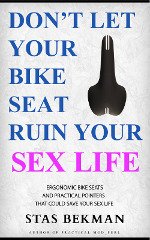Egypt's "King Tut Curse" Caused By Tomb Toxins?
Egypt's "King Tut Curse" Caused by Tomb Toxins?
From: http://news.nationalgeographic.com/news/2005/05/0506_050506_mummycurse.html
Stories of "the mummy's curse" or "King Tut's curse" excited the world after the discovery in 1922 of the ancient pharaoh's tomb in Egypt. Lord Carnarvon, a British sponsor of archaeology in Egypt, died shortly after attending the tomb's opening, inspiring speculation that supernatural forces were at work.
In recent years a scientific mummy's-curse theory was offered for Carnarvon's death. Was he killed by exposure to ancient, toxic pathogens from the sealed tomb? Did they prove too much for his immune system, which was weakened by a chronic illness he had experienced before he went to Egypt?
"When you think of Egyptian tombs, you have not only dead bodies but foodstuffs—meats, vegetables, and fruits" interred for the trip to the hereafter, said Jennifer Wegner, an Egyptologist at the University of Pennsylvania Museum in Philadelphia. "It certainly may have attracted insects, molds, [bacteria], and those kinds of things. The raw material would have been there thousands of years ago."
Recent laboratory studies have revealed that some ancient mummies do indeed carry mold, including at least two potentially dangerous species—Aspergillus niger and Aspergillus flavus. These molds can cause allergic reactions ranging from congestion to bleeding in the lungs.
The toxins can be particularly harmful for people with weakened immune systems.
Some tomb walls may also be covered with respiratory-assaulting bacteria like Pseudomonas and Staphylococcus.
Scientists have also detected ammonia gas, formaldehyde, and hydrogen sulfide inside sealed sarcophagi. In strong concentrations they could cause burning in the eyes and nose, pneumonia-like symptoms, and in very extreme cases, death.
Bats inhabit many excavated tombs, and their droppings carry a fungus that can cause the influenza-like respiratory disease histoplasmosis.
Under the right conditions such hazards could prove deadly.
"Safer in the Tomb Than Outside"
But experts who have examined the case of Lord Carnarvon believe that tomb toxins played no role in his not-so-untimely demise.
The elderly Carnarvon was chronically ill before he set foot in Tut's tomb. Plus, his death occurred months after his initial exposure to the tomb. If he had been exposed to biological beasties in the tomb, they would have manifested themselves sooner.
"I take the position that Howard Carter [the archaeologist who opened the tomb] took before me," said F. DeWolfe Miller, professor of epidemiology at the University of Hawaii at Manoa. "Given the sanitary conditions of the time in general, and those within Egypt in particular, Lord Carnarvon would likely have been safer in the tomb than outside."
"We don't know of even a single case of either an archaeologist or a tourist experiencing any negative consequences [from tomb molds or bacteria]," Miller said. The University of Pennsylvania's Wegner hasn't noticed much concern among her colleagues at tomb sites.
"On the archaeological projects that I've been involved with, we generally don't wear masks or [other protection against hazardous materials] in a tomb," she explained. "If we do, it's because of worry about breathing in dust rather than molds or fungus.
"If someone has a compromised immune system, they might be more [likely] to pick up something in a tomb, but that's also the case in a restaurant or anywhere else they might be."
While molds and bacteria are present in Egyptian tombs, it's no easy matter to identify which may be of truly ancient origin.
"We don't have good procedures to recover the contents of a sarcophagus and assure that gas or microorganisms aren't contaminated [by more modern elements]," Miller said.
"Anything that would have hung around for 3,000 years that you could recover and prove that it's not a contemporary organism (which is not easy to do) would be such a huge scientific find that I hope I'm there to participate in the discovery."
Dangerous Digs?
Yet many archaeological dig sites do hold potentially nasty biological surprises, according to Kenneth Feder, professor of archaeology at Central Connecticut State University in New Britain.
"There is science behind the fact that when you are disturbing deposits that haven't been mucked around in a while, it's at least conceivable that you can expose yourself to some evil stuff," Feder said.
Feder is co-editor of the book Dangerous Places: Health, Safety, and Archaeology.
Researchers on most archaeological digs are surrounded by dust—and exposed to whatever it may contain.
"An old joke about archaeology is that when you go home after a hard day in the field and blow your nose, you blow out dirt," Feder said. "Clearly you have been breathing it in, and if you have been exposed to molds, spores, or fungi that lay dormant in the earth, there is at least a possibility of being exposed to some nasty stuff." Many fungi are found in soil and often fostered by small ground animals and their feces-filled tunnels.
Yet despite the presence of molds, bacteria, and other nasties, most archaeological sites, including tombs, have proven safe for science and tourism alike.
In fact, the real mummy curses may be curses on tombs, rather than on modern visitors.
"There are countless examples of tombs being infected by people, rather than tombs infecting people," the University of Hawaii's Miller explained.
"The opening of these tombs by people who are eager to make discoveries without a mind on how to conserve and protect them can expose [the tombs] to enormous damages. Moisture [has spawned] mold literally growing on walls and destroying paint and other artifacts. As many tombs as they've opened, they've had to close because of damage from tourists."


